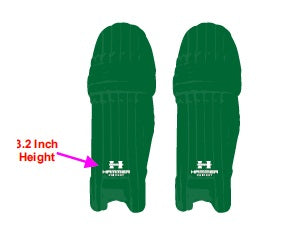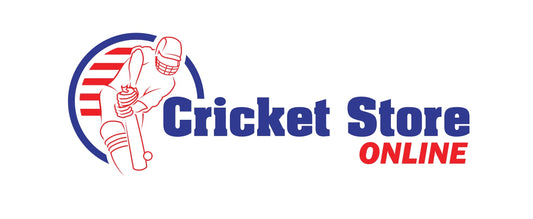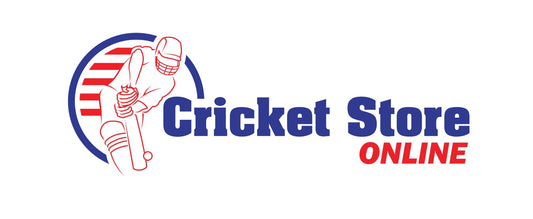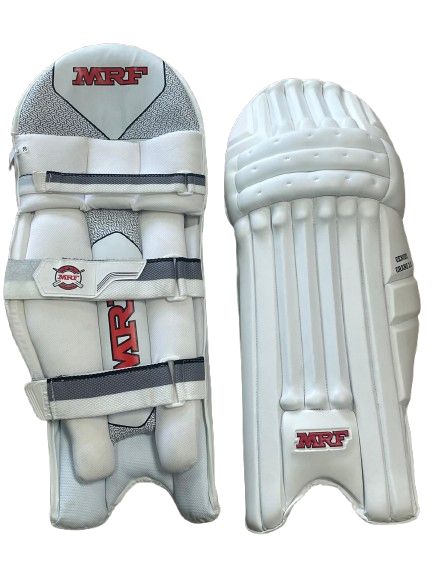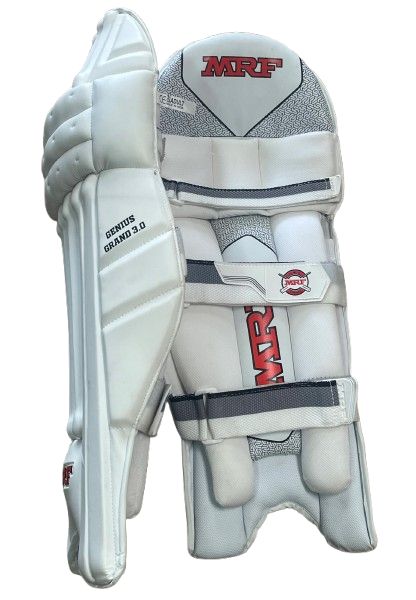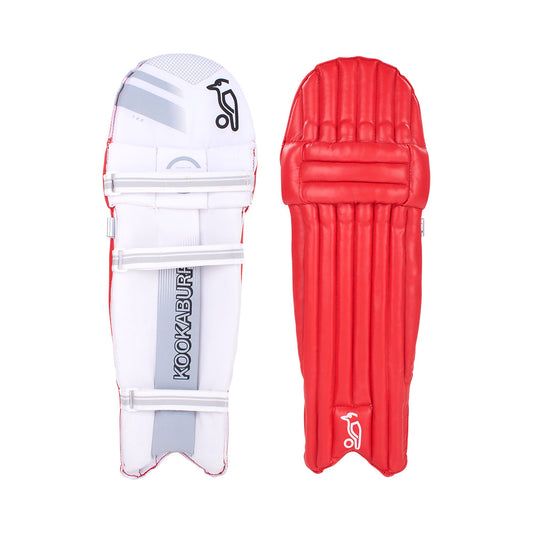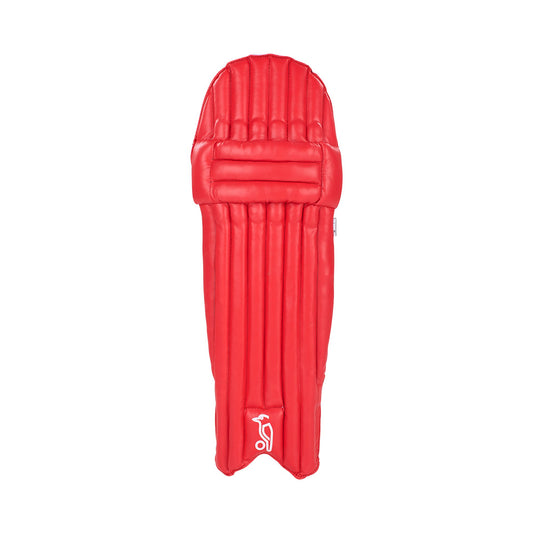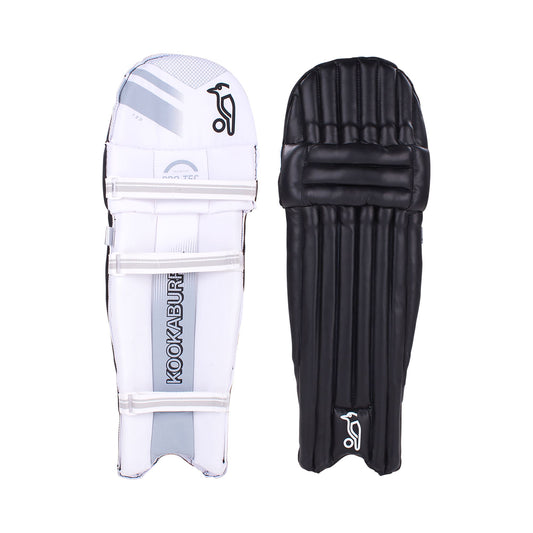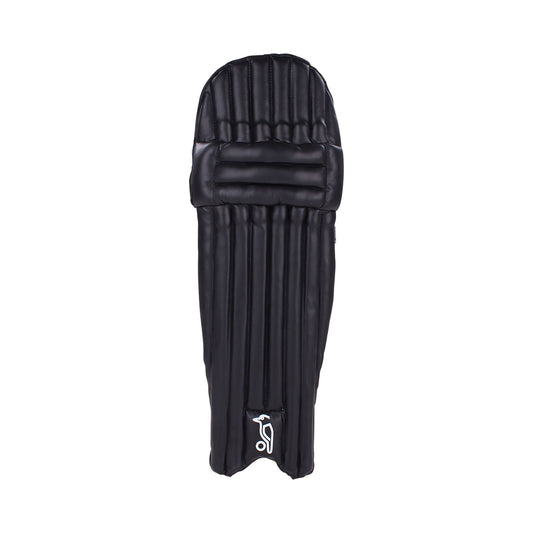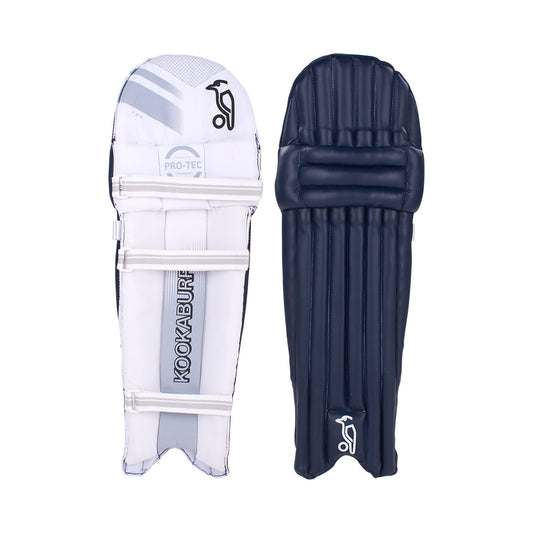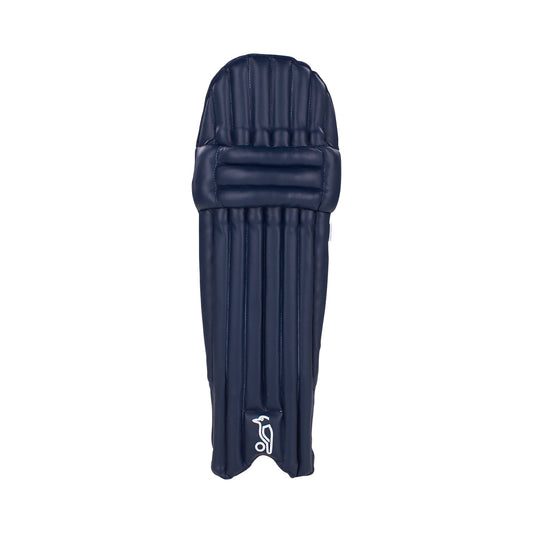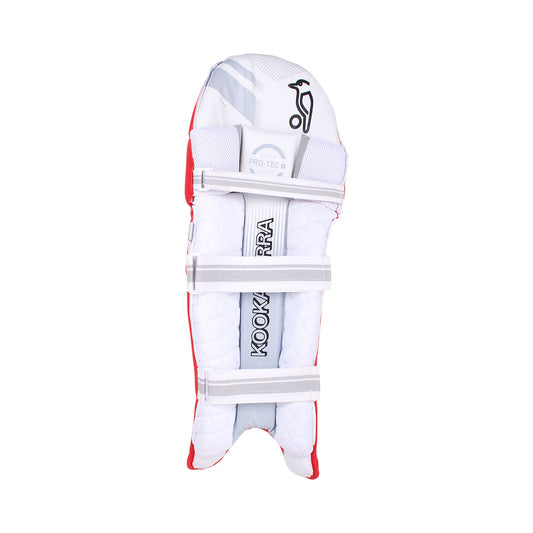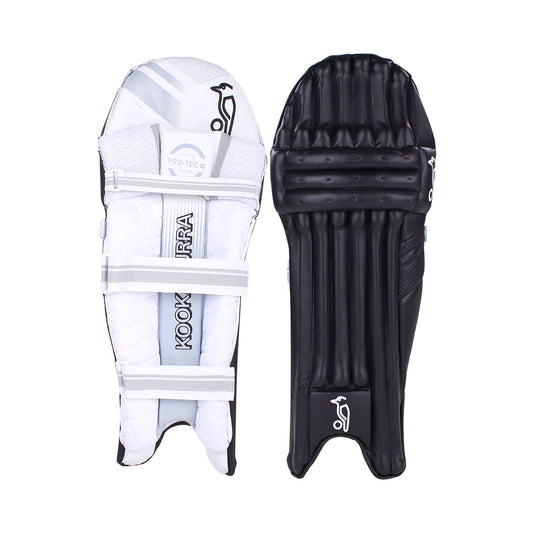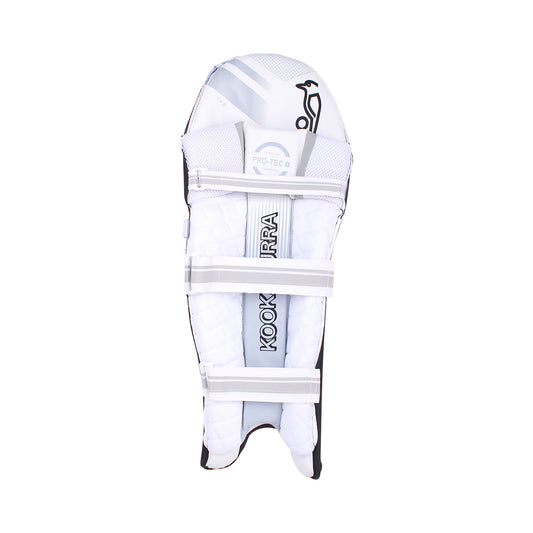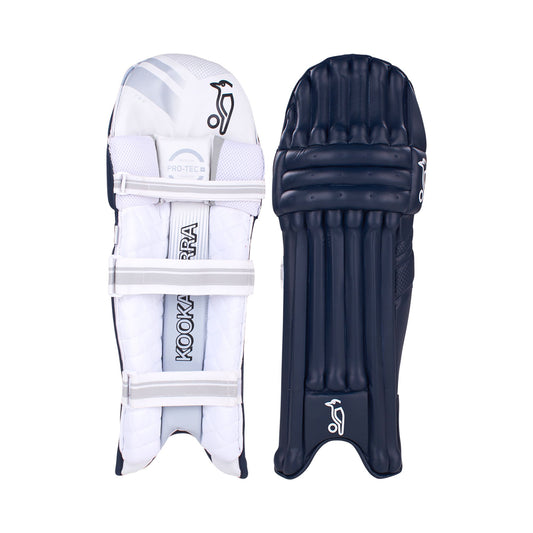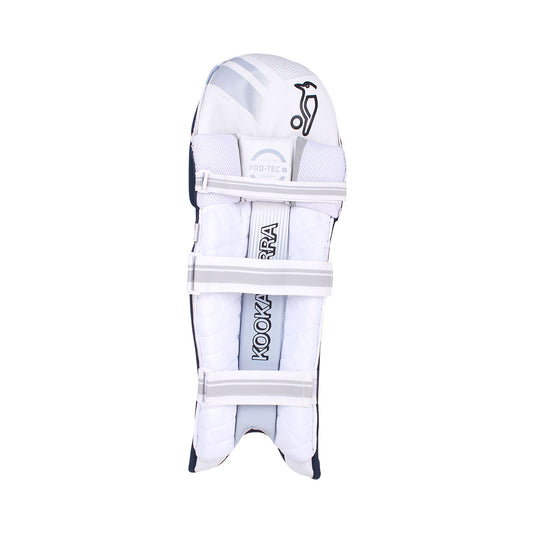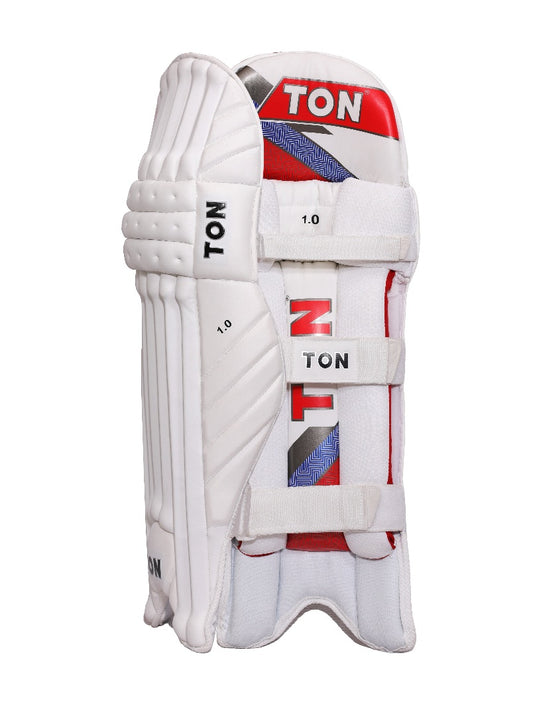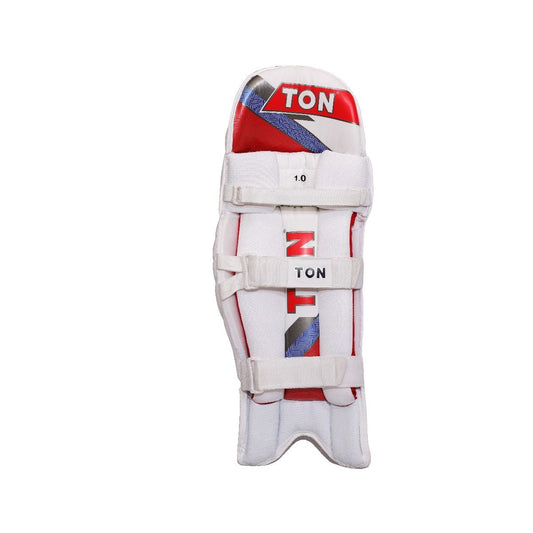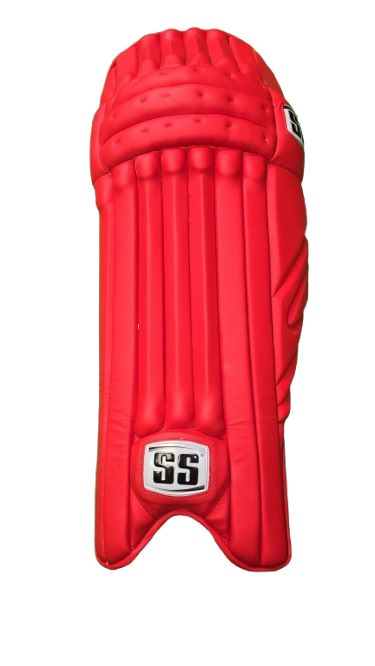Batting Pads
-
Hammer Batting Pad Covers- COLOR
Save 5%Regular price $18.99Regular priceUnit price / per$19.99Sale price $18.99Sale -
MRF Legend VK 18 3.0 Batting Pads (UK Model 4)
Save 21%Regular price $35.49Regular priceUnit price / per$44.99Sale price $35.49Sale -
MRF Legend VK 18 1.0 Batting Pads (UK Model 2)
Save 21%Regular price $49.49Regular priceUnit price / per$62.99Sale price $49.49Sale -
MRF Impact Batting Pads (UK Model 4)
Save 2%Regular price $33.99Regular priceUnit price / per$34.99Sale price $33.99Sale -
MRF Genius Grand 3.0 Batting Pads (UK Model 4)
Save 21%Regular price $52.49Regular priceUnit price / per$66.99Sale price $52.49Sale -
Kookaburra 6.1 T20 RED Batting Pad 2025
Save 7%Regular price $64.99Regular priceUnit price / per$69.99Sale price $64.99Sale -
Kookaburra 6.1 T20 BLACK Batting Pad 2025
Save 7%Regular price $64.99Regular priceUnit price / per$69.99Sale price $64.99Sale -
Kookaburra 6.1 T20 NAVY Batting Pad 2025
Save 7%Regular price $64.99Regular priceUnit price / per$69.99Sale price $64.99Sale -
Kookaburra 4.1 T20 RED Batting Pad 2025
Save 9%Regular price $99.99Regular priceUnit price / per$109.99Sale price $99.99Sale -
Kookaburra 4.1 T20 BLACK Batting Pad 2025
Save 9%Regular price $99.99Regular priceUnit price / per$109.99Sale price $99.99Sale -
Kookaburra 4.1 T20 NAVY Batting Pad 2025
Save 9%Regular price $99.99Regular priceUnit price / per$109.99Sale price $99.99Sale -
SS TON PRO 3.0 Batting Pad 2025
Save 11%Regular price $79.99Regular priceUnit price / per$89.99Sale price $79.99Sale -
SS TON PRO 2.0 Batting Pad 2025
Save 10%Regular price $89.99Regular priceUnit price / per$99.99Sale price $89.99Sale -
SS TON PRO 1.0 Batting Pad 2025
Save 9%Regular price $99.99Regular priceUnit price / per$109.99Sale price $99.99Sale -
SS TON GOLD EDITION Batting Pad 2025
Save 21%Regular price $74.99Regular priceUnit price / per$94.99Sale price $74.99Sale -
SS Test Player Red Batting Pad 2025
Save 20%Regular price $79.99Regular priceUnit price / per$99.99Sale price $79.99Sale
Cricket Batting Pads Collection
Shop premium cricket batting pads for sale at CricketStoreOnline. Find the best cricket leg guards from top brands like Kookaburra, GM, and SG. Expert fitting guide included. Free shipping available.
Cricket Batting Pads Collection - Professional Protection & Performance
When you're looking for where to buy cricket batting pads that offer superior protection and performance, CricketStoreOnline is your trusted destination. Our extensive collection of cricket batting pads for sale features top-quality leg guards from the world's leading cricket equipment manufacturers.
Buying cricket batting pads requires careful consideration of protection, comfort, and performance. Our professional-grade cricket leg guards are the first line of defense against fast bowling, protecting nearly half of your body from cricket balls that can reach speeds exceeding 90mph.
Why Choose Our Cricket Batting Pads?
At CricketStoreOnline, we stock premium cricket protection gear from globally recognized brands. Our cricket batting pads for sale are crafted using cutting-edge technologies that enhance overall performance and durability. Professional cricketers worldwide trust these brands for their superior quality and reliability.
Whether you're searching for youth cricket pads or adult cricket batting gear, our collection caters to players of all skill levels - from junior cricket enthusiasts to professional athletes.
Complete Cricket Batting Pads Size Guide
Getting the perfect fit is crucial when buying cricket batting pads. Properly fitted cricket leg guards ensure optimal protection without compromising mobility between the wickets.
Professional Sizing Chart:
| Size Category | Measurements |
|---|---|
| YOUTHS/SMALL ADULT | 36 - 38cm |
| ADULT | 39 - 43cm |
| LARGE ADULT | 44 - 48cm |
A well-fitted cricket batting pad should have the knee bolster positioned snugly around the knee, with the top reaching approximately halfway up the upper leg. This optimal positioning allows proper placement of thigh guards and inner thigh guards.
Expert Tip: Consult with our Cricket Store Online specialists to ensure you select the perfect cricket batting gear for your specific needs.
Advanced Materials in Modern Cricket Protection Gear
Today's cricket batting pads for sale utilize advanced materials including:
- PVC and Polyurethane: Lightweight synthetic materials offering excellent durability
- High-density Foam Padding: Superior shock absorption and impact protection
- Carbon Fiber & Kevlar: Premium materials used in professional-grade cricket equipment
- Premium Cotton and Cane Interior: Enhanced comfort during extended play
- Heavy-duty Velcro Straps: Secure fitting system with nylon or leather construction
These modern materials make our cricket leg guards significantly lighter than traditional leather alternatives, providing players with enhanced agility during long-format games.
Cricket Batting Pads vs Wicketkeeper Pads
Understanding the difference between cricket batting gear types is essential:
Batting Pads:
- Three-strap system for secure fitting
- Designed for batsmen's mobility requirements
- Enhanced protection for front-leg play
Wicketkeeper Pads:
- Two-strap system for quick removal
- Lighter and more compact design
- Optimized for wicketkeeper's unique movements
Breaking In Your New Cricket Batting Pads
New cricket leg guards require proper breaking-in:
- Secure three strings around the pads (top, middle, bottom)
- Leave overnight to maintain shape
- Practice in net sessions before competitive matches
- Allow natural molding through regular use
Premium Cricket Batting Pads Brands Available
Where to buy cricket batting pads from trusted manufacturers? Our collection features:
- DSC Cricket Batting Pads - Professional-grade protection
- Kookaburra Cricket Leg Guards - Innovative Australian design
- GM Cricket Batting Gear - Traditional English craftsmanship
- SG Cricket Protection Equipment - Trusted by international players
- SS Cricket Batting Pads - Premium quality and comfort
- MRF Cricket Leg Guards - Advanced materials technology
- Hammer Cricket Equipment - Durable construction
- Morrant Cricket Gear - Heritage quality
- ADIDAS Cricket Protection - Modern athletic design
Why CricketStoreOnline is Your Best Choice
For over two decades, CricketStoreOnline has been the premier destination for cricket equipment in North America and worldwide. As certified distribution partners of major cricket brands, we guarantee:
- 100% Authentic Products - Only original cricket batting gear
- Expert Consultation - Professional fitting and product advice
- Comprehensive Selection - Complete range of cricket protection equipment
- Competitive Pricing - Best value for premium cricket batting pads
- Reliable Service - Trusted by cricketers globally
Ready to Purchase Your Cricket Batting Pads?
Buying cricket batting pads has never been easier. Browse our extensive collection of cricket leg guards and find the perfect protection gear for your game.
Cricket Store Online has served cricketers in North America and worldwide for the past two decades. Our experts know precisely how to serve you. We are the certified distribution partners of major cricket brands and only sell original products. If you are looking to buy a perfect Cricket Batting Pads, allow us to guide you!
You can call our experts from CricketStoreOnline or visit our expert blog on cricket to get more insights on cricket equipment.
Frequently Asked Questions
What Are The Different Types Of Cricket Pads And Which One Do You Need?
Selecting the correct cricket pad type is crucial for protection and confidence at the crease. The market offers a variety of pads, each crafted to suit different positions, playstyles, and levels of competition.
Here’s a breakdown of the most common types:
Batting Pads
Batting pads are specifically engineered to shield the legs from the impact of fast deliveries. Traditional designs feature multiple vertical foam and cane segments, wrapped in tough synthetic materials or high-grade leather for endurance. Modern pads integrate lightweight, high-density foam to maximize mobility without compromising safety. Key considerations include pad weight, strapping systems (velcro vs. buckled straps), and the level of arch and knee protection, all of which come into play whether batting for long sessions or facing express pace.
Wicket Keeping Pads
Wicket-keeping pads prioritize agility and rapid movement across the crease. They tend to be lighter and slimmer than their batting counterparts, with a shallower profile and minimalistic wing design for easier squatting and glove work. Advanced models often incorporate extra instep and ankle padding, as keepers are frequently required to make dynamic dives and sudden lateral movements. Materials emphasize flexibility and quick adjustment, reflecting the unique demands of the wicket-keeping role.
Junior Pads
Junior pads are scaled-down versions designed for younger players. They are built to deliver robust protection without hindering natural movement or technique development. Ensuring the correct fit is paramount; excessive bulk or misaligned knee rolls can disrupt balance and footwork at formative stages of learning. Premium options still utilize top-tier foams and ergonomic shapes, mirroring adult pad construction in a youth-friendly format. This becomes even more essential when paired with lighter, size-appropriate cricket bats to help young players develop proper stroke play.
Specialist Pads
In addition to standard batting and wicket-keeping varieties, specialized leg guards for cricket exist for unique contexts. These include inner thigh guards, chest guards, and custom-fitted pads for players recovering from injury or seeking tailored anatomical support. In elite circles, player edition pads are sometimes produced, boasting bespoke foams and reinforced areas based on specific preferences for international professionals.
Understanding the nuances between each type allows cricketers at every level to choose equipment that blends optimal protection with freedom of movement, a balance fundamental to consistent performance and personal safety.
Which Key Materials Make Modern Batting Pads Lightweight And Durable?
Cricket batting pads have evolved dramatically, leaving behind previous eras' stiff, bulky leg guards for protective gear engineered for performance, comfort, and durability. Understanding the primary materials that shape modern batting pads can help cricketers select equipment that balances mobility and safety.
High-Density Foam (HDF)
A fundamental component in most contemporary pads, high-density foam offers robust shock absorption without adding unnecessary weight. Strategically layered HDF panels disperse impact from fast bowlers, reducing the risk of injury while allowing for agile movement.
Cane And Fiber Inserts
Traditional cane rods, prized for their stiffness and energy absorption, remain vital in the primary vertical bolsters of many pads, especially those tailored for advanced and professional use. Modern designs often reinforce these cane spines with lightweight synthetic fiber sheets, adding structure and flexibility where it counts most, especially during contact with high-speed cricket balls.
PU (Polyurethane) Facing
Polyurethane facings cover the outer shell of many high-end pads, providing a smooth, scuff-resistant surface that handles abrasive pitches and diving stops. This material is easy to clean and crucial for weatherproofing, ensuring pads perform consistently in varied conditions.
Microfiber And Mesh Linings
On the inside, comfort rules. Breathable mesh and soft microfiber linings wick away moisture, helping keep legs cool during long innings. These advanced textiles also guard against chafing and heat build-up, an upgrade players appreciate at every level.
Velcro And Elastic Straps
Strong, flexible Velcro and stretchable elastic materials have benefited fastening systems, guaranteeing a secure yet adjustable fit. Enhanced strap designs minimize pad slippage and let players fine-tune how closely the guard sits to the leg, which is crucial for both comfort and quick footwork.
Protect your legs with cricket pads trusted by players who take every innings seriously. From lightweight designs to pro-grade protection, our selection is built for comfort, agility, and serious impact defense. Shop Cricket Store Online for pads that move with you, guard against every bounce, and keep your game sharp from first ball to last.
How Do Leading Brands Compare When It Comes To Batting Pad Design?
A handful of brands shape the world of protective cricket pads, whose craftsmanship, innovation, and attention to detail set the standard. Exploring the unique approaches of the leading brands reveals key differences that matter to players at every level, especially when building a complete cricket equipment setup that balances protection, comfort, and style.
1. MRF
MRF has carved out a reputation with pads catering to players seeking tradition and high performance. Known for durable cane construction blended with contemporary materials, MRF pads often balance classic two-panel designs with reinforced instep sections and deep side wings. Their professional-grade models are favored by international players for sustained protection during intense sessions.
2. SS (Sareen Sports)
SS (Sareen Sports) maintains its standing with pads that embody reliability and a generous protection profile. Key traits include broad side wings, high-density foam bolsters, and cushioned vertical bolsters, which are especially popular among developing cricketers and club-level athletes. The brand’s commitment to accessible yet durable options means its pads are a frequent sight on pitches worldwide.
3. GM (Gunn & Moore)
GM (Gunn & Moore) takes a notably technical approach. Each model is crafted with detailed consideration for anatomical shaping and weight distribution. GM pads often feature low-resistance, soft-touch straps, triple-layered foam for graded protection, and intricate knee pocket shaping. Across both junior and adult lines, their pads are renowned for ergonomic adjustability and contemporary aesthetics.
4. DSC
DSC (Delux Sports Company) has rapidly grown into one of the most reliable names in cricket gear, especially among up-and-coming cricketers and seasoned professionals. Their batting pads feature a thoughtful combination of lightweight construction and high-density foam, engineered to absorb shock while allowing smooth leg movement. Expect contoured wings, padded straps, and a focus on breathability, delivering elite performance without added bulk. With strong visual appeal and attention to comfort, DSC pads are match-ready straight out of the box.
5. Hammer
Hammer Cricket, a brand born to serve the unique needs of the American cricketing scene, specializes in tough, no-nonsense gear with a premium feel. Their batting pads reflect this philosophy, offering durable outer casings, reinforced instep zones, and flexible caning for enhanced knee protection. Hammer pads often prioritize adjustability and quick-fit features, making them ideal for players at every level who value time-saving design paired with serious protection on the field.
6. Adidas
Adidas brings its global reputation for athletic innovation into cricket with batting pads that focus on agility, protection, and breathability. Expect lightweight foams, contoured profiles, and moisture-wicking linings that help you move freely while staying dry. Their pads often feature smart ergonomic shaping and stylish minimalism, which is ideal for modern players who want sleek, high-performance gear backed by a world-renowned sports brand. Adidas pads keep pace if you're chasing speed between wickets and clean footwork.
What Makes Wicket-Keeping Pads Different From Batting Pads?
When comparing wicket-keeping pads and batting pads, the distinctions come down to design, protection, weight, and the movement demands of each role.
Shape And Coverage
Batting pads feature vertical, contoured panels that wrap around the leg from knee to ankle, offering comprehensive protection against fast-paced deliveries. Their construction is typically bulkier, focusing on deflecting both pace and spin. In contrast, wicket-keeping pads are slimmer and shorter, often with a more rounded top. They prioritize mobility, since keepers need to squat, spring laterally, and gather balls close to the ground.
Materials And Padding
Both types employ high-density foam and lightweight cane, but batting pads generally contain extra reinforcement around the shin and knee areas. This helps absorb the repeated impact of the ball. Wicket-keeping pads utilize lighter padding, especially on the outer sides, acknowledging the lower likelihood of direct ball strikes at extreme speeds while allowing rapid movement.
Weight And Flexibility
Mobility is paramount for wicketkeepers. Their pads are designed to minimize weight and avoid restricting explosive movement. Some advanced models even integrate split sections and flexible wings for a better fit during crouching. Batting pads, designed as a protective shield during stance and running, accept more weight to offer superior impact resistance.
Strap And Fit
Strap configuration also differs. Batting pads employ wider straps and secure buckles to ensure a snug fit that resists twisting during running between wickets. Wicket-keeping pads use narrower and often nylon-based straps, granting a closer fit that won’t snag when moving quickly behind the stumps.
Specialization And Regulations
Using role-specific pads will enhance comfort and performance for players specializing exclusively in one discipline. Regulations in competitive cricket support these differences by prescribing size and coverage limits for wicket-keeping gear, ensuring nothing compromises the spirit and safety of the game.
Understanding these fundamental distinctions helps players select the right kit for their position, balancing agility and defense where it matters most.
Are You Making These Common Cricket Pad Fitting Mistakes?
Selecting the right cricket thigh pads is more than matching leg height or picking a top brand. Mismatched sizing and overlooked details can not only disrupt comfort but may also compromise protection on the pitch.
Here are some frequent fitting slip-ups and strategies to sidestep them:
Ignoring Height And Calf Circumference
Players often default to age or general size guides, but pads that are too long or short can restrict movement or expose vital areas. Proper fitting means measuring from the top of the foot (where the pad sits) to just below the knee cap, and checking that the straps comfortably fit around your calf, snug, but not tight.
Overlooking Strapping Systems
Pad straps control stability and pad retention. Using pads with poorly placed or under-padded straps can cause chafing or slippage. Test the strap placement and padding with your preferred clothing layers. For added assurance, mimic batting movements to ensure the pads stay put.
Focusing Solely On Weight
While lighter pads appeal to many, sacrificing protection or fit for minimal weight is a classic pitfall. Well-designed pads use lightweight materials while maintaining robust coverage. Assess foam density, cane reinforcement, and overall pad contour: comfortable doesn’t have to mean flimsy.
Neglecting Knee And Ankle Protection
Some players opt for slimline pads and overlook the articulation at the knee or the shape of ankle wings. Pads should offer proper knee cup articulation and ensure the knee rests snugly within the indentation without excessive play. Double-check that the lower portion adequately shields your ankle bone without impeding flexibility, especially as that lower section interacts with your cricket footwear during lunges and quick footwork.
Forgetting Match Conditions And Personal Habits
Weather, pitch type, and personal batting stance all impact pad performance. If you regularly sweep or play on low-bounce wickets, ensure the inner pad and instep sections provide the necessary abrasion resistance and flexibility. Adjust your priorities based on your biggest risks and most common movements.
A comprehensive fitting session, trying pads on, moving through your range of shots, and consulting size charts, prevents most mishaps. Well-fitted pads guard against impact and directly contribute to confidence and performance at the crease.
How Do You Know When It’s Time To Replace Your Cricket Pads?
Cricket pads endure tremendous wear and tear over time, regardless of whether they’re used in weekend friendlies or high-stakes tournaments. Knowing when to replace your cricket pads is crucial for protection and confidence at the crease.
Here’s what every cricketer should watch for:
- Visible Damage & Structural Wear: Check the outer surface and inner padding after matches. If you notice cracks, split seams, or significant surface abrasions, it’s a sign your pads are compromising on protection. Padding that feels compressed or has shifted inside can reduce shock absorption, leaving legs vulnerable to hard-hitting deliveries, especially during long innings, when leg guards and cricket shoes work together to manage repeated movement and impact.
- Declining Comfort & Fit: Pads that have lost their original shape or loosened and begun sliding down the leg should be reassessed. Straps that have frayed, lost elasticity, or Velcro that no longer grips securely are classic indicators that the gear isn’t holding up to movement. An ill-fitting pad can distract during play and be a safety risk.
- Odor & Hygiene Issues: Even when cared for, pads can start to retain sweat and moisture deep within their foam after repeated use. Persistent odors, despite regular airing, or visible mold/mildew signal that hygiene has been compromised. This is unpleasant and also increases the risk of skin irritation or infection.
- New Safety Features & Evolving Standards: Advanced pad technology means newer models offer improved lightweight materials, moisture control, and protective design. If your kit is several seasons old, compare its features to what’s currently available. Outdated pads may lack the latest shock diffusion or anatomical fit, which can make a real difference in game situations.
Regularly assessing your cricket pads ensures you’re as protected and comfortable as the game demands. Whether just starting or playing competitively, being proactive about equipment replacement is essential for safety and performance.











